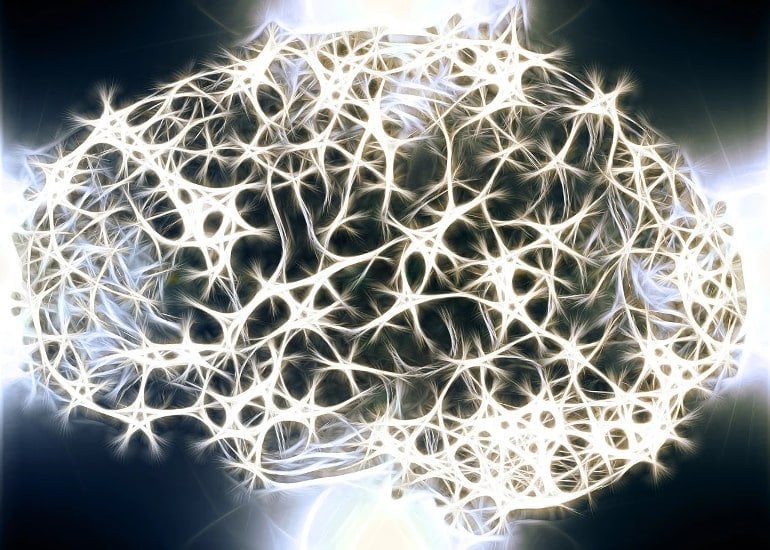Summary: Anhedonia and despair come up when POMC neurons within the arcuate nucleus of the hypothalamus develop into hyperactive because of continual stress. Reducing the exercise additionally reduces emotions of despair and lack of pleasure.
Source: Medical College of Georgia at Augusta University
It’s clear that continual stress can affect our conduct, resulting in issues like despair, lowered curiosity in issues that beforehand introduced us pleasure, even PTSD.
Now scientists have proof {that a} group of neurons in a bow-shaped portion of the mind develop into hyperactive after continual publicity to emphasize. When these POMC neurons develop into tremendous lively, these form of behavioral issues outcome and when scientists cut back their exercise, it reduces the behaviors, they report within the journal Molecular Psychiatry.
Scientists on the Medical College of Georgia at Augusta University regarded within the hypothalamus, key to capabilities like releasing hormones and regulating starvation, thirst, temper, intercourse drive and sleep, at a inhabitants of neurons known as the proopiomelanocortin, or POMC, neurons, in response to 10 days of continual, unpredictable stress.
Chronic unpredictable stress is extensively used to check the affect of stress publicity in animal fashions, and on this case that included issues like restraint, extended moist bedding in a tilted cage and social isolation.
They discovered the stressors elevated spontaneous firing of those POMC neurons in female and male mice, says corresponding creator Xin-Yun Lu, MD, PhD, chair of the MCG Department of Neuroscience and Regenerative Medicine and Georgia Research Alliance Eminent Scholar in Translational Neuroscience.
When they straight activated the neurons, reasonably than letting stress enhance their firing, it additionally resulted within the obvious lack of ability to really feel pleasure, known as anhedonia, and behavioral despair, which is basically despair.
In people, indicators of anhedonia would possibly embrace not interacting with good mates and a lack of libido.
In mice, their regular love for sugar water wains, and male mice, who usually like to smell the urine of females when they’re in warmth, lose a few of their curiosity as nicely.
Conversely when the MCG scientists inhibited the neurons’ firing, it lowered a lot of these stress-induced behavioral adjustments in each sexes.
The outcomes point out POMC neurons are “both necessary and sufficient” to extend susceptibility to emphasize, and their elevated firing is a driver of ensuing behavioral adjustments like despair. In truth, stress overtly decreased inhibitory inputs onto POMC neurons, Lu says.
The POMC neurons are within the arcuate nucleus, or ARC, of the hypothalamus, a bow-shaped mind area already considered essential to how continual stress impacts conduct.
Occupying the identical area is one other inhabitants of neurons, known as AgRP neurons, that are essential for resilience to continual stress and despair, Lu and her crew reported in Molecular Psychiatry in early 2021.
In the face of continual stress, Lu’s lab reported that AgRP activation goes down as behavioral adjustments like anhedonia happen, and that once they stimulated these neurons the behaviors diminished. Her crew additionally needed to know what continual stress does to the POMC neurons.
AgRP neurons, higher recognized for his or her position in us searching for meals once we are hungry, are recognized to have a yin-yang relationship with POMC neurons: When AgRP activation goes up, for instance, POMC activation goes down.
“If you stimulate AgRP neurons it can trigger immediate, robust feeding,” Lu says. Food deprivation additionally will increase the firing of those neurons. It’s additionally recognized that when excited by starvation indicators, AgRP neurons ship direct messages to the POMC neurons to launch the brake on feeding.

Their research discovered that continual stress disrupts the yin-yang steadiness between these two neuronal populations. Although AgRP’s projection to POMC neurons is clearly essential for his or her firing exercise, the intrinsic mechanism might be the key mechanism underlying hyperactivity of POMC neurons by continual stress, Lu says.
The intrinsic mechanism might embrace potassium channels in POMC neurons which can be recognized to reply to a variety of various indicators, and when open, result in potassium flowing out of the cell, which dampens neuronal excitation.
While the potential position of those potassium channels in POMC neurons in response to emphasize wants research, the scientists suspect stress additionally impacts the potassium channels and that opening these channels is perhaps a potential focused remedy to restrain the wildly firing POMC neurons.
Excessive exercise of neurons can be recognized to provide seizures and there are anticonvulsants given to open potassium channels and reduce that extreme firing. There is even some early scientific proof that these medication may also be useful in treating despair and anhedonia, and what the Lu lab is discovering might assist clarify why.
Lu hasn’t regarded but, however she desires to additional discover the position of those channels to raised perceive how stress impacts them in POMC neurons and the way finest to focus on the channels if their findings proceed to point they play a key position in thrilling POMC neurons.
Chronic stress impacts all physique programs, based on the American Psychological Association. Even muscle groups tense to maintain our guard up towards damage and ache. Stress may cause shortness of breath, significantly in these with preexisting respiratory issues like bronchial asthma. Longer time period, it could possibly enhance the danger for hypertension, coronary heart assault and stroke, even alter the nice micro organism in our intestine that helps us digest meals.
Funding: The analysis was funded by the National Institutes of Health.
About this stress and neuroscience analysis information
Author: Toni Baker
Source: Medical College of Georgia at Augusta University
Contact: Toni Baker – Medical College of Georgia at Augusta University
Image: The picture is within the public area
Original Research: Open entry.
“Increased intrinsic and synaptic excitability of hypothalamic POMC neurons underlies chronic stress-induced behavioral deficits” by Xin-Yun Lu et al. Molecular Psychiatry
Abstract
Increased intrinsic and synaptic excitability of hypothalamic POMC neurons underlies continual stress-induced behavioral deficits
Chronic stress publicity induces maladaptive behavioral responses and will increase susceptibility to neuropsychiatric situations. However, particular neuronal populations and circuits which can be extremely delicate to stress and set off maladaptive behavioral responses stay to be recognized.
Here we examine the patterns of spontaneous exercise of proopiomelanocortin (POMC) neurons within the arcuate nucleus (ARC) of the hypothalamus following publicity to continual unpredictable stress (CUS) for 10 days, a stress paradigm used to induce behavioral deficits corresponding to anhedonia and behavioral despair.
CUS publicity elevated spontaneous firing of POMC neurons in each female and male mice, attributable to lowered GABA-mediated synaptic inhibition and elevated intrinsic neuronal excitability.
While acute activation of POMC neurons didn’t induce behavioral adjustments in non-stressed mice of each sexes, subacute (3 days) and continual (10 days) repeated activation of POMC neurons was adequate to induce anhedonia and behavioral despair in males however not females below non-stress situations.
Acute activation of POMC neurons promoted susceptibility to subthreshold unpredictable stress in each female and male mice. Conversely, acute inhibition of POMC neurons was adequate to reverse CUS-induced anhedonia and behavioral despair in each sexes.
Collectively, these outcomes point out that continual stress induces each synaptic and intrinsic plasticity of POMC neurons, resulting in neuronal hyperactivity. Our findings recommend that POMC neuron dysfunction drives continual stress-related behavioral deficits.














Discussion about this post